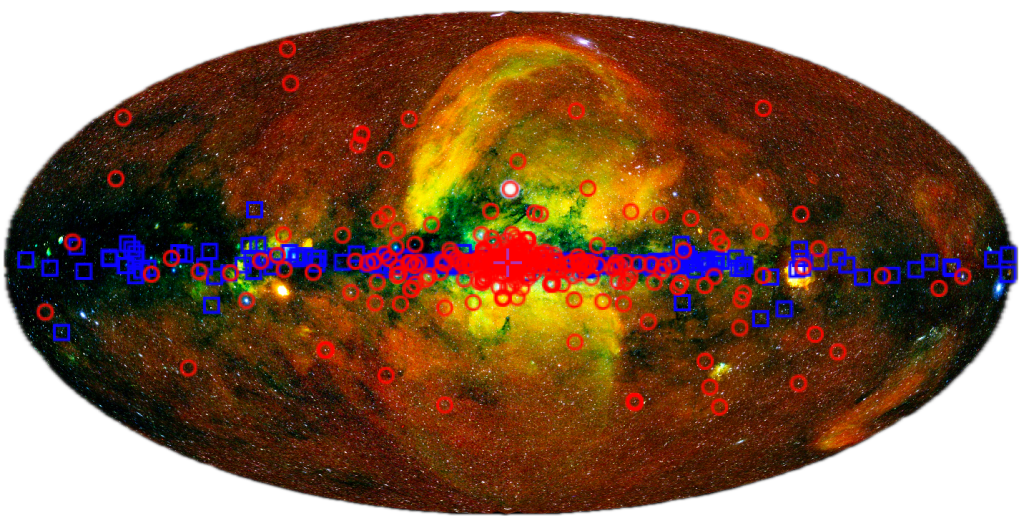Neutron stars (NSs) and Black holes (BHs) are among the most exotic objects in the universe and the ultimate endpoints of massive star evolution. A better knowledge of their origin, evolution, and feedback onto the interstellar medium is essential to understand the evolution of the Galaxy as a whole. The eROSITA all-sky survey (eRASS) will for the first time unveil the X-ray faint, most populated end of the Galactic population of these exotic objects. The main aim of the proposed research is to fully characterize the X-ray galactic populations of accreting NSs and BHs by combining the eRASS data with archival data and follow-up observations.
We have studied the known luminous population of accreting NS/BHs and started to uncover the X-ray faint, most populated end of the Galactic population with eRASS, during the first funding phase of eRO-STEP (2021-2024). We have developed methods to identify X-ray binaries (XRBs) among millions of other X-ray sources, identified around a hundred of new XRB candidates, and confirmed several new objects. In the second phase (2024-2027), we aim to fully characterise the Galactic populations of XRBs by combining the now complete multi-epoch eRASS data with archival multiwavelength data and follow-up observations to characterize known and identify more new XRBs. In combination with population studies of X-ray sources in nearby galaxies (P7), it will enable us to discover the long-sought missing links in the evolution paths of BH and NS systems.

eROSITA all-sky map with positions indicated of known Galactic high-mass (blue) and low-mass (red) XRBs. Credit: http://astro.uni-tuebingen.de/~xrbcat/






